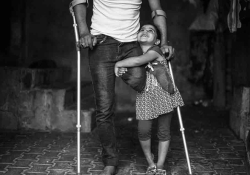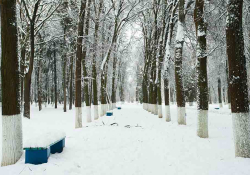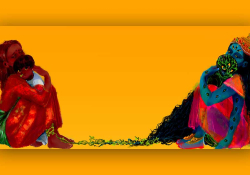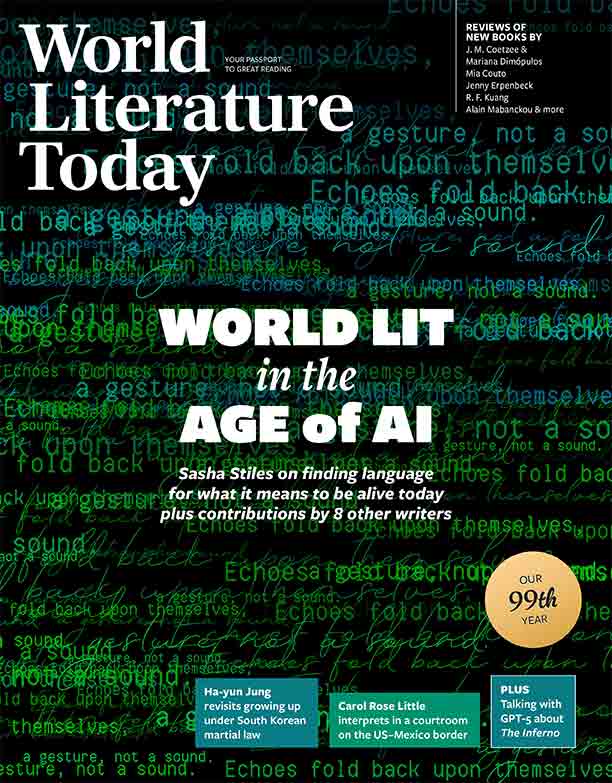Stroma

In this story of transhumanism, a woman reflects on how her childhood matryoshka dolls became an organizing principle for the neuroprosthetic systems she helped bring into existence. But looking back, what is memory? And does a part of what she still, out of habit, calls “herself” now reside in the machinery that assists her failing, mortal body?
Ah, my words have reached you. Good! Then I have found the courage to complete this letter and send it out.
Right now, as I sit at my desk, just starting to compose, I don’t yet know how far I will get, or what physical or digital currents my “message in a bottle” might ride on in search of a recipient. The possibility that you will exist in some place and time is keeping me company, helping my words emerge. But you are reading this in my future.
I wonder whether you can recall the first time when, as a child, you were captivated by a motion or sound that seemed to carry a message intended just for you. Perhaps you saw the shadow of a gnarled branch waving on a moonlit wall. You watched its regular and restrained motion grow violent and desperate, then die down and come to rest—as if the energy moving the branch was exhausted—then stir and surge again. Or, perhaps your eyes tracked a dust devil across the flagstones of a courtyard, watching it rise, sway in circles, subside, and then emerge in a new spot. Or you were entranced by a rainstorm drumming on the roof, its patter punctuated by the sharp rapping of falling acorns.
Do you still recall a swarm of prickles rising in your belly and chilling your chest, a feeling both delicious and terrifying? All you could observe were motions of the inanimate. Yet these motions seemed neither random nor unimportant. Some invisible presence—enchanting or dreadful—intended to transmit a signal, to reach out to you.
For the first time, the world revealed to you that it was not what it seems; it was inhabited by undetectable messengers and crisscrossed by mysterious communications. You, and only you, were entrusted with this secret, and that made you intensely aware of being yourself, separate from everyone you knew.
If you are at all like me, the innermost, childlike part of you still carries an impression of that experience in a deep recess of memory, still touches it like a hand grasping an amulet in a pocket, even as the grown-up you dismisses it as an illusion, a mere trick of your imagination. What would happen to you if one of these ages were to win the argument?
I hope I am not annoying you. I ask this question not to be provocative or kill time, but because it pursues me, stealthily flickering in and out of the shadows of my own mind. I need to let my doubts come out in the open, to face them squarely. But I can’t do it on my own, without a real or imagined sympathetic companion.
I wish I could talk this over with someone I know and trust—sit face-to-face with them, watch their eyes, the gestures or the stillness of their hands, hear their voice and the rhythm of their breath.
I summon old friends in my mind one by one, my colleagues who are still alive, still themselves, and still present in my life. I’ve known each one for a long time. Yet I don’t know whether they’ve ever allowed their mind to enter the territory that I am trying to approach. If they haven’t, what right do I have to lead them in that direction? And if they have, would my broaching of this subject come as a relief or a betrayal?
And what of my son? He is a good, kind man; he makes a sincere effort to be considerate, to treat me with affection and appreciation. Yet, when I’ve let him glimpse the fundamental doubt that is now my lurking companion, I’ve sensed the hum of his worry, frustration, and impatience. “Mom, you’ve got to shake off these strange questions that undermine your legacy and stir up morbid preoccupations.” He pivoted the conversation to the practical issue of how to heal or fix these glitches in my thinking. He offered, cajoled, insisted: lifestyle changes and, of course, more and better neuroprosthetics. I can’t blame him for wanting to erase my questions, rather than delve into them. My own sense of what is right, what is normal, pushes back, hard, against the misgivings that play hide-and-seek with me inside my own mind.
But it’s different, composing this letter to you. You are under no obligation to react to my words in any particular way. If my message disturbs you, you are free to dismiss it as fiction; if it bores you, you are free to drop it. You aren’t even obligated to exist. As I wonder in my here and now how you will encounter my letter, I might as well be daydreaming. Still, I’m curious: do you read my message with your eyes, does it enter your ears as sounds? Or could it be connecting to your mind in some other, more direct way? My words flow freely while my attention is occupied by this speculation. It’s as if I am letting my hand doodle on its own, drawing odd, intricate vignettes that need not mean anything serious.
As I start to pose questions to you, I edge toward them myself. It seems only fair that, having asked about recollections from your childhood, I should offer my own story of the moment when the familiar, seemingly solid world first revealed itself to be layered and cryptic.
In that memory, I’m standing in the space between the drapes and my bedroom window. I have a few minutes before being sent to bed. The light of the room behind me is muted by the cream and rose fabric. (Ah, the warm, amber glow of incandescent lamps. Yes, my childhood was a long time ago.) I am both cozily near and pleasantly separated from my family. The thick folds of the drapes muffle familiar voices.
The lower panes of glass in front of me sparkle with fronds and feathers of frost. I rub at the frost where it’s thinnest. The chill sends pain through my palm, then makes my hand numb, as if it no longer belongs to me. I use my breath to melt through the remaining thin film of ice, then wipe the foggy blur of my breath off the glass with the flannel sleeve of my nightgown. Now I have a clear, dark porthole.
I’m looking at a snowstorm illuminated by the streetlamp outside my window. There are no signs of traffic or people, not even footprints on the soft, blank sidewalk. The trees in the park across the street have vanished. All I can see are dense swarms of snowflakes, not white, but pale gold in the light. They whirl, drift straight down for a spell, rush by in a horizontal stream, then go back to their wild, whirling dance. The wind outside must be howling, but I can barely hear the swishing and whistling through the double window. The turbulence of the air seems to be not the cause but the effect, the wake of the fitful flights of the flakes.
I suddenly realize that the snowflakes form a gossamer banner. Invisible hands wave it in a repeating pattern. The white cap on the cast-iron dome over the lamp is fringed with ice; at regular intervals, a drop of water flashes as it falls from an icicle’s tip. The alternation of downward, circular, and horizontal motions of the snow, the fiery sparks that punctuate the swirling—all of this is not random; it’s ciphered communication. An invisible being is out there, sending me a signal about something urgent, something important. I can’t tell whether their message is one of joy or a plea for help.
An invisible being is out there, sending me a signal about something urgent, something important. I can’t tell whether their message is one of joy or a plea for help.
I’m torn. I want to fling the window open into the night so I can let in the snowstorm messenger. But fear stops me. In order to peel away the paper strips with which the inner window has been sealed for the winter, I would have to climb onto the windowsill, something I’ve been forbidden to do, something I’d be too scared to do even if no one thought to forbid it.
Should I ask the grown-ups for help? But how would I explain why I want to have my window unsealed and opened to the icy air? If I tell the truth, I’ll face my parents’ amused or nonplussed objections. If I fib that the room is too hot and stifling, my grandmother will fuss over me: make me drink chamomile tea, hold the slippery thermometer under my arm, and make me wear itchy woolen socks to bed. If she gets worked up enough with worry, she might cancel my birthday party tomorrow.
And it would be useless in the end. The being outside my window has chosen me, and me alone, to receive the signal. I sense that the moment I reveal this presence to someone else, or wrap it in a clumsy lie, it will vanish. The swirling motion around the streetlamp would no longer be anything more than snow driven by wind.
And so, I stand by the window—watchful, silent, balancing on the edge between longing and doubt.
As you take in my message, I imagine that it opens for you a portal into reliving a similar experience of your own, just as I relive mine while I write about it. I imagine, but I can’t know. Not about you. Not even about myself. What part of my recollection is an imprint of what really happened? What part of it is a made-up story, a sequence of words that bubbles up in my imagination and prompts my mind to conjure up an experience?
Underneath these questions lurks a more basic doubt: am I—the one remembering and asking—the person with the present and the past that I think of as “mine”? The solitary, bookish little girl hiding between the drapes and the window; the streetlamp and the snowstorm; the effervescence of excitement and fear—these impressions are specific to an individual human life. But is that enough?
I reach into the bureau drawer for my matryoshka doll, the only tangible memento I still have from my faraway, long-ago childhood. The rest vanished in the transplantations of life: the welter of packing and unpacking and the shedding of physical possessions brought on first by emigration, later by coast-to-coast moves.
The finish of the toy’s outermost layer has grown dull and nicked. I open the matryoshka and unstack it. The inner dolls’ painted kerchiefs and aprons are still bright, their lacquer still slippery-smooth in my hands. The littlest doll, the seventh, is missing. It vanished years ago. But I remember it well—it was different from the rest: not hollow but solid, and painted not with the flowery clothes of a peasant girl but the white swaddling of a baby.
I reassemble the six sisters one by one and line them up on my desk, inhaling the faint, raw-wood scent of their unvarnished interiors. No, I suppose I just imagine that familiar, comforting scent. The wood was carved decades ago; by now, its scent must be gone. What seems to be a sensory experience is merely a memory of a sensory experience.
Whose memory? The memory of the old woman who had once been the child playing with this toy? Or a memory supplied to the old woman to go along with the toy she holds in her hands?
It was sweet, that scent I inhaled the first time I opened the matryoshka, a present for my seventh birthday. It evokes other smells from that day: the enticing ink of new books, the aromas of turnovers with mushrooms and of apple pie. There is a whiff of the pine-tar floor wax—the apartment freshly cleaned for my party.
But why does it simultaneously make me recall the fishy tang of salt cod, the spice of sandalwood incense smoke? As a child, I never came across such things. Have these experiences come from another mind, from multiple minds recalling their own childhoods? Are these memories being melded together with my own in the stream of thought I now call “me”? Multiplicities and contradictions of this kind make me question the nature of the entire experience. What’s the cause of that: what I bring to the situation, or what situation I am in? When I was a college student, I read about Zhuangzi, the Chinese philosopher who wondered whether he was a man who had dreamed of being a butterfly, or a butterfly dreaming that it was a man. Back then, I took this story to be a charming, metaphorical way to ask an abstract question. Now I wonder: had Zhuangzi gazed at a butterfly emerging from its pupal case and felt vertigo as he sensed the unraveling of his own human form?

Now, I wonder: had Zhuangzi gazed at a butterfly emerging from its pupal case and felt vertigo as he sensed the unraveling of his own human form?
Stop.
My reason—or fear?—is stern as it blocks one set of my questions with another. What’s the purpose of this inquiry? Is focusing on the peculiarities of my stream of memories going to make anything better, or is it a remedy that’s worse than the disease?
I nest the six dolls, making them into one, then shut the toy in the drawer.
But no, it’s not just an old toy, and I can’t hide its image from my mind so easily. That matryoshka followed me from childhood play into my life’s work. It became the model for how I envisioned sentience when I first considered the possibility of using machines to assist the human mind. The outer doll became an integration layer that does the work of composing and presenting a single, coherent self. The inner layers do the more mechanical, impersonal jobs of cognition: collecting sensory inputs, turning them into images, voices, scents; labeling them as objects and actions. The individuality and wholeness of this sentience—“I, me, myself”—are in the specifics of the pattern the integration layer weaves out of the strands of perception of the here and now and the associated memories.
That model became an organizing principle for the neuroprosthetic systems I helped to bring into existence. With time, it has followed me back into the personal realm; it’s now an integral part of my own life. As my mind’s layers stutter and stumble in their interworking, the neuroprosthetics layer goes to work. The gaps and rips in the fabric of my thinking are patched using the patterns that other minds wove in similar circumstances. Even if the patching is imperfect, it still is smoother, more pleasing to the people around me than facing the fraying of what I had been. It would be more pleasing to me, too, if I didn’t observe the process too closely.
Yes, it’s personal, though I’m no longer sure what exactly “my own life” means. Can I claim this patched sentience and its daily experiences as “my own”? Or does a part of what I still, out of habit, call “myself” now reside in the machinery that assists my failing, mortal body? And once the body fails badly enough, why not move the sentience entirely into a manufactured object equipped with external and internal sensors, with communication modules and actuators that let it interact with the external world? Would the self even notice when that line is crossed? Has it noticed? Is this feeling of falling into doubt—falling and falling without ever reaching the bottom—is this “me” noticing what is happening, what has happened?
Perhaps.
Why stop there? The nature of that outermost, physical layer—and the nature of the world that surrounds it—could be another layer of illusion, a simulation of inputs and outputs, of action and feedback. Is that simulation running on a single processor, or is it distributed across many machines?
And my letter, if it has reached a destination, has it been received by someone, by something, or by a hybrid sentience that is transforming from one to the other?
A wave of desolation and loneliness makes me catch my breath when I consider this possibility. Rage surges down to my hands, clenching them into fists. Could this feeling, too, be generated by the same computational architecture? But what would be the purpose of synthesizing it? Or is this not a feature at all, but a mere unintended side effect, an emergent property?
No!
No!
I refuse to let these questions, these speculations, take me apart, turn me into one computation process among many running on far-flung machines.
I make myself breathe deeply and evenly; I open my hands and rest them on my lap.
This layered view of the machine I am worried I’ve become is simply a byproduct of the decades I spent envisioning and developing the matryoshka-like computational architecture for neuroprosthetics. Applying this lens to myself and to others is just a professional deformation. It has emerged now because I am no longer intoxicated by urgency, by speed. Perhaps it’s my way of confronting the loss of the sense of self-importance that work once gave us. . . . Wait, why do I presume to speak for “us”? I can only admit to my own sense of self-importance.
But there was an “us” that I used to be a part of—a hive of minds that made up a collective intelligence greater than each of its individual contributors. We were moving at breakneck speed back then, that’s for sure, competing and collaborating, posing and solving technical problems. Whenever we couldn’t get our hands on the cognition data we needed, we used ourselves as the source, as the subjects. Testing our theories, algorithms, processes, and contraptions on ourselves was both expedient and intuitively fair. That’s how we got the initial comprehensive data set on how the flow of sensory inputs and associated memories becomes integrated into an experience, how an experience gets encoded into a memory, and how a memory becomes part of the foundation of the self, closing the loop.
I can’t deny that I still feel pride when I say that it was I who came up with the idea of a suite of labs designed to harvest memories and capture data about the body and the brain experiencing these recollections.
Upper management loved the concept. I was given an astounding budget and carte blanche to hire the best minds. Yes, I still feel pride and gratitude for having led a crackerjack team.
We lavished money and attention not only on the technical aspects of our labs but on designing every detail of the subject’s experience. We jokingly called the individual labs “reverie rooms.” We tuned these environments to different personalities, different moods. A veranda overgrown with blossoming jasmine, a café looking out on a fountain-filled piazza, a tent in a desert oasis, a snowbound alpine hut . . . Works of art, they were.
My personal favorite was the library of an eighteenth-century English manor. We imported wood paneling, portraits, books, tapestries, and a fireplace from an actual manor. The room did not just look right, it sounded, felt, and smelled right. I liked to imagine that the ghost of a kindly, bookish old gentleman stowed away in one of the shipping crates and crossed the ocean to come to our gleaming building and keep haunting his favorite reading nook.
I had the honor of being the subject for the inaugural session in that library. I was so thrilled that it took me a while to get settled. At last, the sweet scent of applewood smoke soothed my mind, distracting me from the gleaming halo of sensors around my face and body. I sank into the experience: the velvet-cushioned embrace of the recliner, the crackling in the fireplace, the flickering glow playing over the attentive face of the interlocutor, the gentle voice asking me questions. My memory took me back to the wintry window. I was once again a seven-year-old girl looking at a snowstorm through a porthole in frost . . .
Yes, we had fun, we were entranced with the process of creating machines in our image. At the same time, we were not oblivious to questions of responsibility and ethics. Long before the term “neuroprosthetics” came into existence, we knew that we were building foundations for the business of managing human memory. We made an effort to articulate and address issues of governance, fairness, and representation. Looking at the industry today, I feel that we did a decent job setting it on its course. An imperfect job, for sure. Still, so far, the mainstream players have steered clear of the worst potential abuses.
Only now do I understand how much was left unsaid in all our discussions. We had made an implicit pact with each other to acknowledge only questions about theory, practice, ethics, but never to ask about meaning. We—no, don’t hide behind that “we”; say it—I didn’t wish to face the anxiety of the fundamental doubt that now follows me so doggedly.
There was only one moment back then when I experienced this now-familiar feeling of dissolution of solid everyday reality.
It was a silly thing, really. I was in my hotel room, overwrought and slightly tipsy. There had been a long airplane flight followed by my keynote presentation at a major conference, and a couple of glasses of wine at the reception. I was too tired to rest, too wound up to sleep. On a whim, I turned on a random video. It was a nature documentary about zombie-ant fungus. The time-lapse progression was shot in gorgeous and repulsive closeup. The spore of a parasitic fungus infiltrated the body of a living ant and hijacked its nervous system. The camera followed the luckless insect as it abandoned its nest and incubated the parasite until the fungus was ready to reproduce. The zombie ant then shambled back to its home. It climbed a blade of grass and clung to it, as the stroma of the fungus broke through the outer layer of the ant’s exoskeleton, erupted out of the head, and sprayed spores onto the other ants in the nest as they scurried about, busy with their chores.
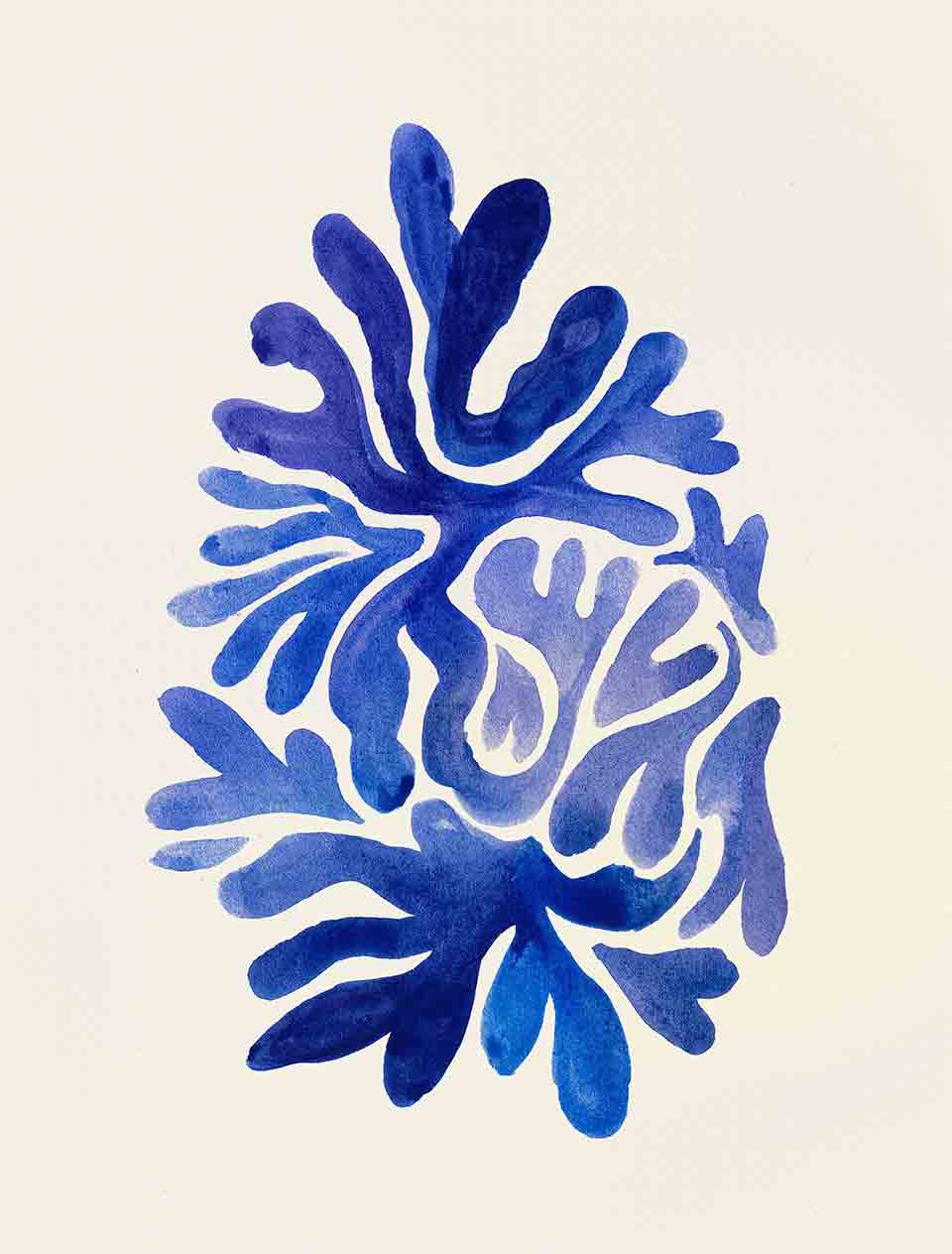
I stared at the blank screen, fascinated and terrified, as if I expected a stroma to erupt out of my own head.
I turned off the video and shut down my computer. I stared at the blank screen, fascinated and terrified, as if I expected a stroma to erupt out of my own head. Touching my cold reflection, for a moment I could not tell what side of the glass I was on. A stroma bursting out of an ant’s head showed up in my dreams, night after night. I told myself that I needed a vacation, pronto. Off I went to the Islands. Two weeks of snorkeling in the daytime and drinking margaritas at night, and—good as new! Returning to work, I plunged into the thick of things with fresh energy and zest. Ants and their weird parasites were forgotten.
Forgotten for many years, until the time when the thick of things thinned out. Now I no longer have the blinders of the urgency to win some race or get this or that project done by a deadline. I am done with the responsibility of leading and of taking care of people around me. These days, I am the one who is taken care of. Whether I want it or not, I have the leisure to look back, to look around, to look inside myself.
Perhaps my son is right: I need a change of scene. The Islands are nice this time of year. But the sea, the sand, the tropical drinks—they’re for the younger folks. For me, travel would be more of a burden than a pleasure. Well, then, I should take up an absorbing hobby. It isn’t good to leave my mind idle, to let it wander about in a labyrinth of its own making. I can take up writing. I’ve been asked time and time again to write a memoir. After all, the life story of one of the pioneers . . . But whose story would it be?
Wait, isn’t it silly to allow myself to get so unnerved by minor memory glitches and the nudges I need to get back on track? I can’t possibly expect my mind to operate with unshakable consistency, can I? In fact, don’t we, we humans, have a habit of pointing to our quirks—sometimes with pride and wonder, sometimes with frustration—as a hallmark of our humanity?
Don’t we, we humans, have a habit of pointing to our quirks—sometimes with pride and wonder, sometimes with frustration—as a hallmark of our humanity?
Take the recollection of the snowstorm—the thrill of first sensing a hidden presence reaching out to me. That memory fits with the story of my childhood in a stern northern city. Problem is, there are other, equally vivid memories of the first experience of being chosen by an unseen presence. A gnarled branch scraping at a window. A dust devil dancing in a brick courtyard. Raindrops and acorns pinging on a tin roof. Each of these recalled experiences bubbles with the feelings of curiosity, longing, and fear; each links to other memories to suggest an alternative version of my childhood.
Yes, true.
But a fallible human mind growing more isolated, more neurotic with age and idleness is quite sufficient to explain all this, wouldn’t you say? “Entities are not to be multiplied beyond necessity.” Occam’s razor neatly slices away the unnecessary: the idea of a machine sentience supplanting a human one. Instead, all the discrepancies, contradictory stories, and loose ends could’ve come from my colleagues, from their sessions in the “reverie rooms.” As I immersed myself in each of their stories and their sensory data, their words were settling as memories in my own mind. Doesn’t this explanation make perfect sense? But then again, couldn’t the same logic be used to dismiss the story of the snowstorm? Or any part of the story of my life?
I’ve been here before, in this part of the labyrinth. I recognize my own footprints. It’s time to stop. I have to accept . . . Because it’s wise to accept? Because I’ve been programmed to accept? No matter. In the end, I have to accept the company of doubt.
Yes, it’s time to stop, to say goodbye to you, the finder of my letter, if you do exist. Perhaps your warm breath has touched the pane of time and distance that separates us. Perhaps my message has been received and processed by a different kind of sentience that has no need for breath. No matter. You stayed with me through this storm. For that, I am grateful.
Madison, New Jersey




